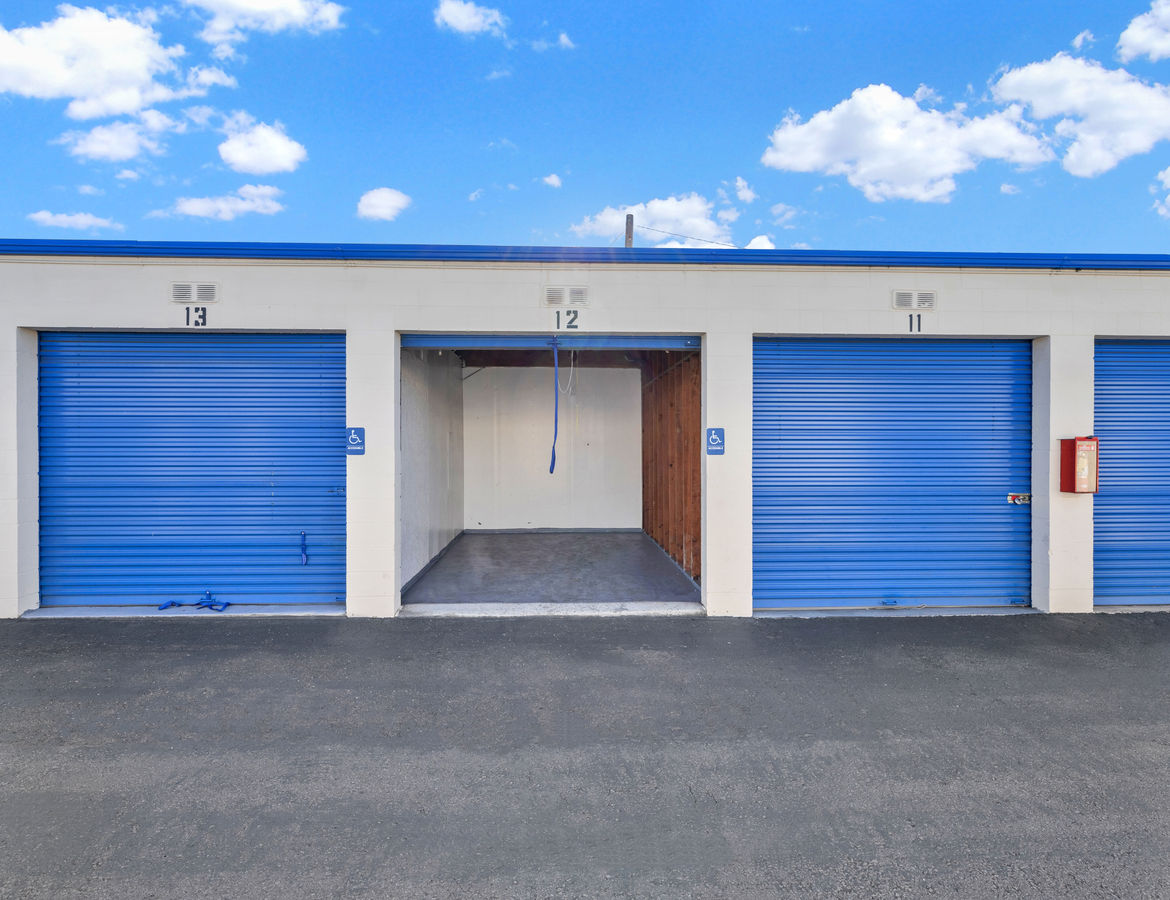
Strategic Inventory Storage in San Diego: A Competitive Edge for Businesses
San Diego, a vibrant economic hub on the Pacific coast, is renowned for its diverse business landscape. From cutting-edge biotech and defense industries to a booming tourism sector, innovative tech startups, and significant cross-border trade with Mexico, businesses in San Diego operate within a unique and dynamic environment. In such a competitive arena, efficient and strategic inventory management is not just a logistical necessity; it’s a critical component of success, directly impacting profitability, operational efficiency, and customer satisfaction.
The challenge for many San Diego businesses, especially those experiencing growth or dealing with seasonal fluctuations, lies in finding adequate, affordable, and flexible storage solutions for their inventory. High real estate costs, limited industrial space, and the complexities of managing a modern supply chain often push companies to look beyond traditional on-site storage. This article delves into the critical role of business inventory storage in San Diego, exploring the available solutions, key considerations for choosing a partner, the benefits of strategic storage, and future trends shaping the industry.
The San Diego Business Landscape and Its Inventory Challenges
San Diego’s economy is characterized by several key sectors, each with distinct inventory storage needs:
- Biotechnology and Pharmaceuticals: Home to a thriving biotech corridor, San Diego houses numerous companies dealing with sensitive, high-value products requiring strict climate control, sterile environments, and rigorous security. Inventory for these businesses often includes research materials, active pharmaceutical ingredients, and finished products that demand precise temperature and humidity management, often at cold or ultra-cold temperatures.
- Technology and Electronics: Tech companies, from hardware manufacturers to software developers with physical product components, need secure, often climate-controlled storage for electronic parts, finished goods, and prototypes. Rapid product cycles and just-in-time inventory models are common, requiring highly responsive storage and fulfillment.
- Manufacturing and Defense: San Diego’s strong military presence and manufacturing base mean a constant flow of components, raw materials, and finished goods for defense contractors and various manufacturing operations. These often require large-scale, secure storage facilities capable of handling diverse product sizes and weights.
- E-commerce and Retail: The explosion of online retail has created a demand for efficient pick-and-pack operations, rapid shipping, and reverse logistics (returns processing). E-commerce businesses need flexible storage that can scale quickly with demand, especially during peak seasons.
- Tourism and Hospitality: Hotels, restaurants, and event venues in San Diego require consistent supply chain management for consumables, linens, equipment, and promotional materials. While often smaller in volume, the need for timely delivery and precise inventory control is paramount.
- Cross-Border Trade: San Diego’s unique position bordering Mexico (Tijuana) makes it a critical hub for cross-border logistics. Companies engaged in nearshoring or importing/exporting goods require storage solutions that facilitate efficient customs clearance and transit, often needing bonded warehousing.
These diverse needs, coupled with San Diego’s relatively high cost of living and industrial real estate, create a complex challenge for businesses. On-site storage can quickly become a bottleneck, consuming valuable space that could be used for core business operations, while also incurring significant overheads in terms of rent, utilities, insurance, and labor.
The Evolving World of Inventory Storage Solutions
Modern inventory storage goes far beyond simply renting a warehouse. It has evolved into a strategic function, with various solutions tailored to different business needs:
- Traditional Warehousing: This involves renting or owning a dedicated warehouse space. While it offers maximum control, it also comes with high fixed costs, requires significant capital investment (if owned), and places the burden of staffing, security, and equipment on the business. It lacks flexibility for fluctuating inventory levels.
- Self-Storage Facilities: For smaller businesses, startups, or those needing overflow space, commercial self-storage units can be a cost-effective, flexible option. They offer security and 24/7 access but typically lack value-added services like inventory management systems, climate control beyond basic air conditioning, or fulfillment capabilities. They are best suited for non-perishable, non-sensitive items or temporary storage.
-
Third-Party Logistics (3PL) Providers: This is arguably the most comprehensive and increasingly popular solution for San Diego businesses. 3PLs offer a complete suite of services beyond just storage, including:
- Warehousing: Secure, often climate-controlled facilities.
- Inventory Management: Utilizing advanced Warehouse Management Systems (WMS) for accurate tracking, cycle counting, and reporting.
- Order Fulfillment: Pick, pack, and ship services directly to customers or retailers.
- Kitting and Assembly: Combining multiple items into a single package or assembling products.
- Cross-Docking: Moving goods directly from an inbound truck to an outbound truck with minimal storage time.
- Transportation Management: Arranging shipping, negotiating rates, and optimizing routes.
- Reverse Logistics: Handling returns, inspections, and restocking.
- Value-Added Services: Labeling, quality control, specialized packaging.
3PLs allow businesses to outsource their entire logistics operation, freeing up capital, reducing overhead, and leveraging the provider’s expertise, technology, and economies of scale.
- On-Demand and Flexible Storage Solutions: Emerging models offer highly flexible storage, often by the pallet or cubic foot, allowing businesses to pay only for the space they use. This is ideal for startups, seasonal businesses, or those with unpredictable inventory fluctuations, providing agility without long-term commitments.
Key Considerations When Choosing an Inventory Storage Partner in San Diego
Selecting the right inventory storage solution in San Diego requires careful evaluation of several factors:
- Location and Accessibility: Proximity to major transportation arteries (I-5, I-8, I-15), the Port of San Diego, San Diego International Airport, and the U.S.-Mexico border is crucial. Easy access facilitates faster inbound and outbound logistics, reducing transportation costs and delivery times.
- Security Measures: Given the value of most business inventory, robust security is non-negotiable. Look for facilities with 24/7 surveillance, access control systems, alarm systems, on-site security personnel, and comprehensive insurance coverage. For sensitive data, ensure digital security for WMS is also strong.
- Climate Control and Specialized Needs: For biotech, electronics, food, or certain manufacturing components, climate-controlled storage (temperature and humidity regulation) is essential. Businesses must ensure the facility can meet specific requirements, such as refrigerated, frozen, or cleanroom environments.
- Scalability and Flexibility: A good storage partner should be able to accommodate fluctuations in inventory volume, allowing businesses to scale up during peak seasons and scale down during slower periods without incurring penalties or needing to move facilities. This flexibility is a significant advantage of 3PLs over traditional warehousing.
- Technology Integration: Advanced Warehouse Management Systems (WMS) are vital for real-time inventory tracking, order processing, and reporting. The ability to integrate the storage provider’s WMS with your own Enterprise Resource Planning (ERP) or e-commerce platforms (like Shopify, Amazon) is crucial for seamless operations and data accuracy.
- Cost Structure and Transparency: Understand all costs involved, including storage fees (per pallet, cubic foot, or square foot), handling fees (inbound/outbound), pick-and-pack charges, shipping costs, and any additional fees for specialized services. Transparent pricing helps avoid hidden costs.
- Customer Service and Communication: A responsive and communicative partner is invaluable. Look for a provider with a dedicated account manager, clear communication channels, and a track record of excellent customer support.
- Value-Added Services: Beyond basic storage, consider if the provider offers services like kitting, light assembly, quality control checks, returns processing, or specialized packaging. These can streamline your operations and reduce the need for multiple vendors.
- Compliance and Certifications: Depending on your industry, ensure the storage provider complies with relevant regulations (e.g., FDA for pharmaceuticals, HAZMAT for dangerous goods) and holds necessary certifications.
Benefits of Strategic Inventory Storage in San Diego
Adopting a strategic approach to inventory storage in San Diego offers numerous advantages:
- Cost Savings:
- Reduced Overhead: Eliminates the need for expensive warehouse leases, utilities, equipment, and staff.
- Optimized Space: Businesses only pay for the space they use, preventing wasted resources.
- Economies of Scale: 3PLs leverage their larger operations to secure better shipping rates and operational efficiencies, passing savings on to clients.
- Minimized Shrinkage: Professional security and inventory management reduce loss from theft or damage.
- Improved Operational Efficiency:
- Focus on Core Business: Outsourcing logistics allows companies to concentrate on product development, marketing, and sales.
- Streamlined Processes: Leveraging a partner’s expertise and technology leads to more efficient inventory management, order fulfillment, and shipping.
- Faster Turnaround Times: Optimized workflows and strategic locations contribute to quicker processing and delivery.
- Enhanced Customer Satisfaction:
- Faster Delivery: Proximity to customers and efficient fulfillment operations lead to quicker shipping times.
- Accurate Orders: Advanced WMS and professional handling reduce errors in picking and packing.
- Improved Returns Process: Efficient reverse logistics enhance the overall customer experience.
- Risk Mitigation and Business Continuity:
- Disaster Recovery: Off-site storage protects inventory from potential disruptions at your primary business location.
- Scalability for Demand Fluctuations: The ability to quickly adjust storage capacity helps manage seasonal peaks or unexpected surges/drops in demand without over-investing in fixed assets.
- Expertise in Compliance: Partners specializing in specific industries can ensure regulatory compliance, reducing legal and financial risks.
- Competitive Advantage:
- Agility and Responsiveness: Faster fulfillment and flexible capacity allow businesses to respond quickly to market changes.
- Access to Advanced Technology: Small and medium-sized businesses gain access to sophisticated WMS and automation without the capital investment.
- Market Expansion: Efficient logistics support expansion into new markets, including cross-border opportunities into Mexico.
Future Trends in San Diego Inventory Management
The landscape of inventory storage is continually evolving, driven by technological advancements and changing consumer expectations:
- Automation and Robotics: Increased adoption of automated guided vehicles (AGVs), robotic picking systems, and automated storage and retrieval systems (AS/RS) will boost efficiency and reduce labor costs in San Diego’s warehouses.
- Artificial Intelligence (AI) and Machine Learning (ML): AI-driven demand forecasting, inventory optimization, and route planning will become more sophisticated, allowing for predictive analytics that reduce waste and improve delivery times.
- Sustainability in Logistics: Growing emphasis on green logistics, including energy-efficient warehouses, electric delivery vehicles, and optimized routes to reduce carbon footprint, will influence storage provider choices.
- Hyper-Local Fulfillment: As e-commerce continues to grow, there will be an increasing demand for micro-fulfillment centers or urban logistics hubs within San Diego to facilitate same-day or next-hour deliveries.
- Blockchain for Supply Chain Transparency: Blockchain technology could offer enhanced transparency and traceability throughout the supply chain, particularly valuable for high-value or regulated goods common in San Diego’s biotech and defense sectors.
Conclusion
For businesses operating in San Diego’s dynamic and competitive environment, strategic inventory storage is more than just a cost center; it’s a powerful enabler of growth, efficiency, and customer satisfaction. Whether through leveraging the comprehensive services of a 3PL, utilizing flexible on-demand solutions, or carefully selecting specialized warehousing, the right inventory storage partner can provide a significant competitive edge. By understanding the unique challenges of the San Diego market, evaluating potential partners based on critical factors, and embracing future trends, businesses can optimize their supply chain, reduce operational burdens, and focus on what they do best: innovating and thriving in America’s Finest City. The investment in smart inventory storage is an investment in the long-term success and resilience of a San Diego business.

